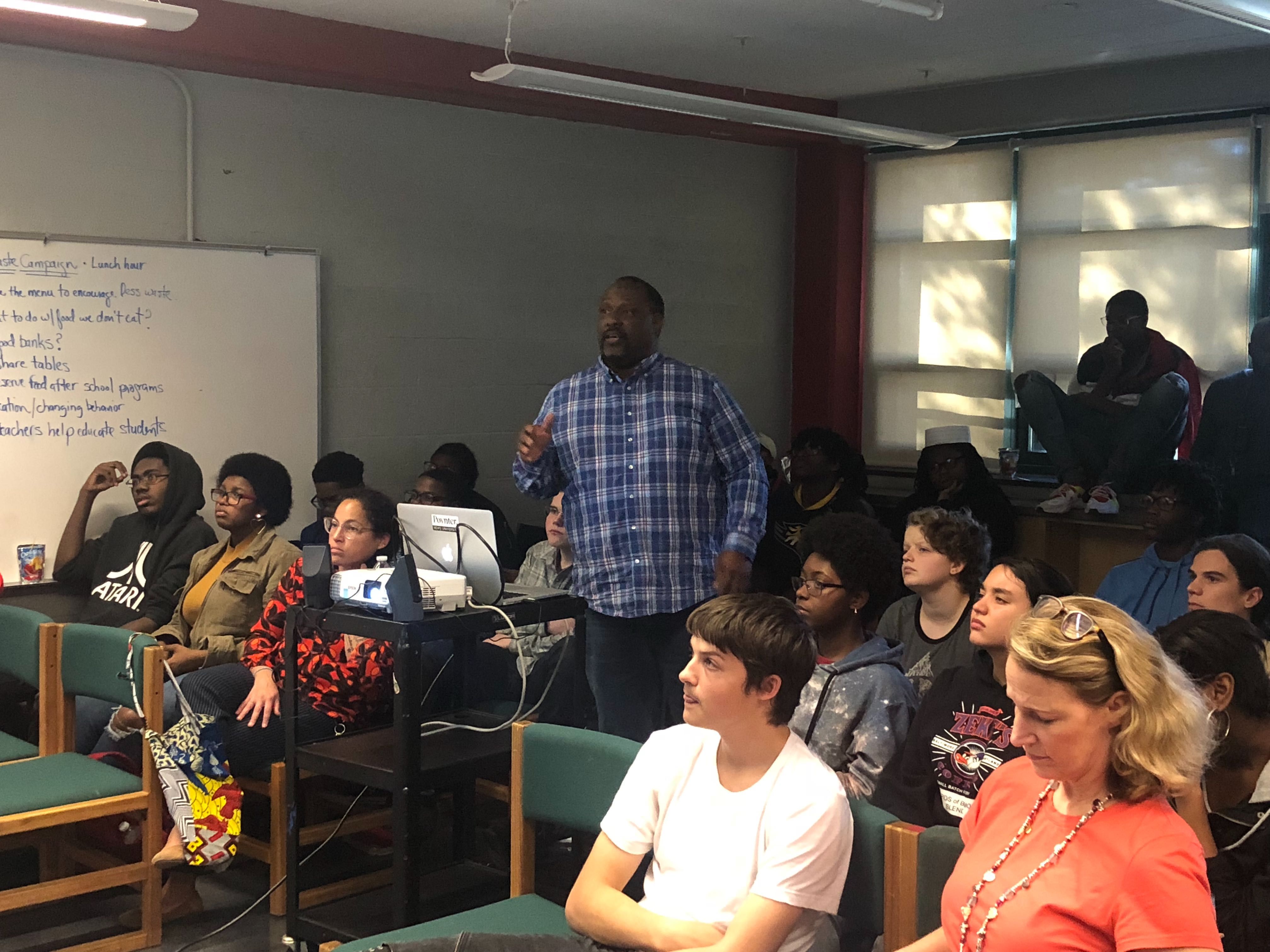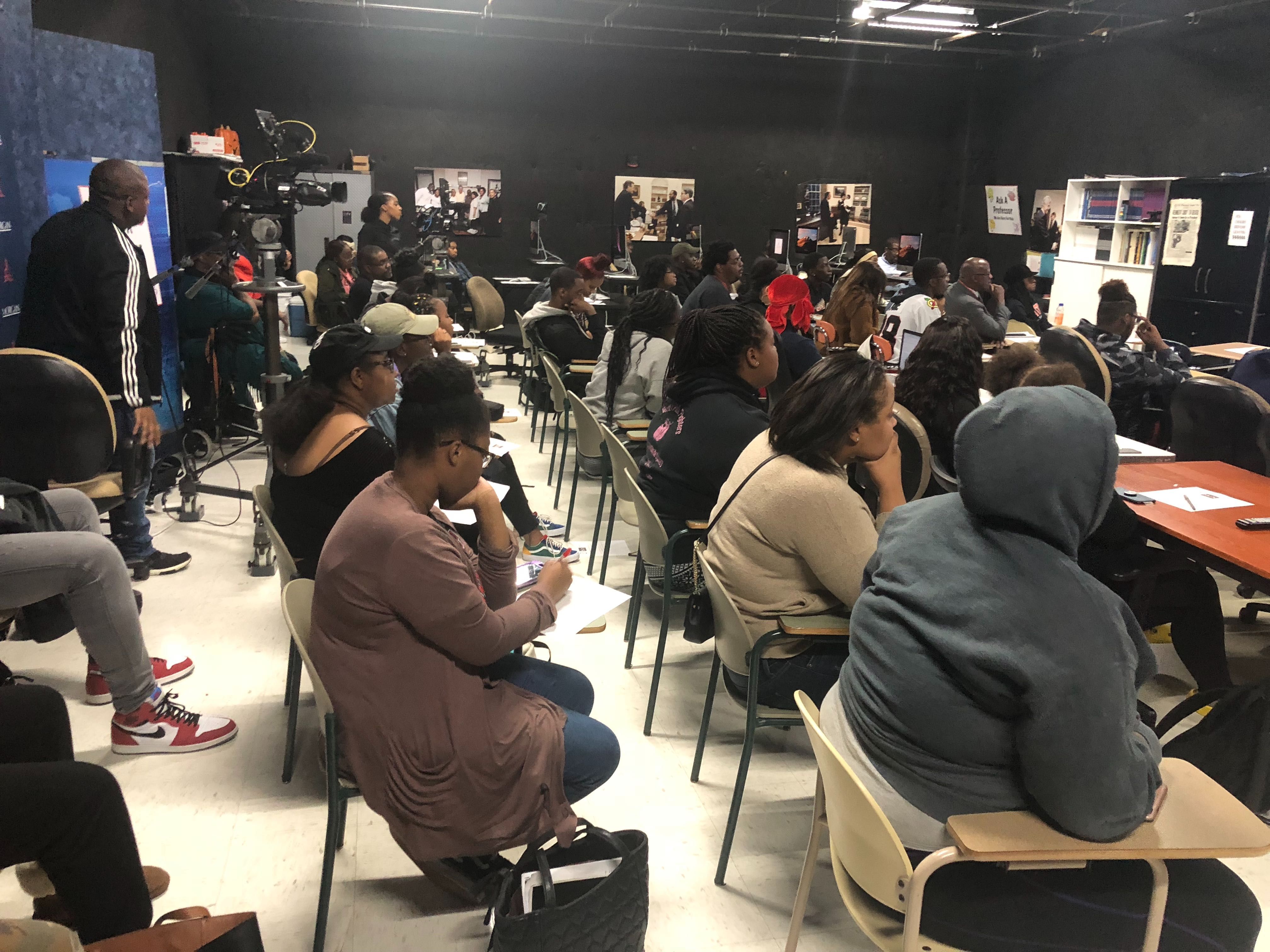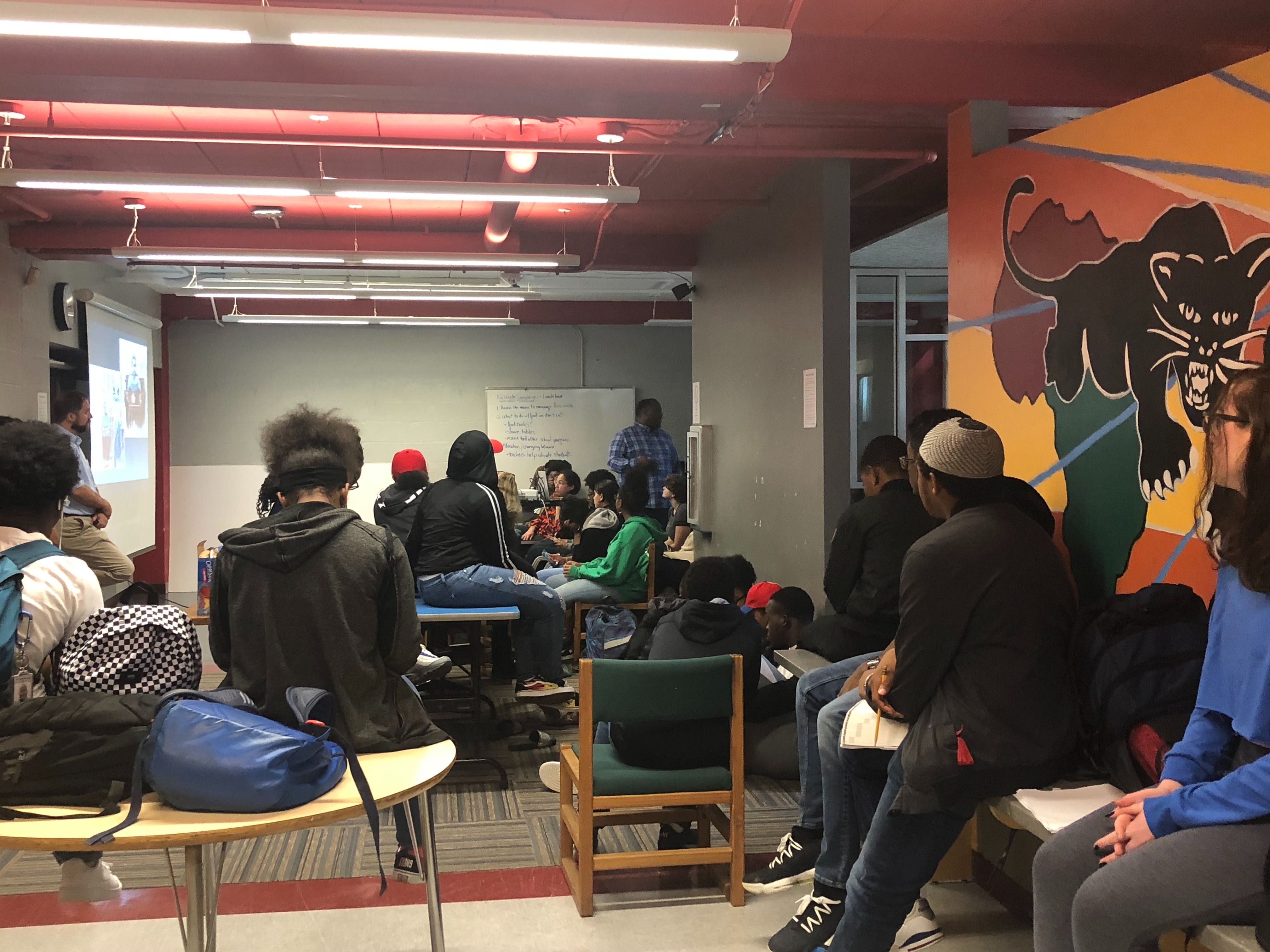On Thursday October 24th, 2019, Pulitzer Center education team members accompanied Baltimore Sun journalists and editors for visits to Morgan State University and Bard Early College High School. Earlier that year, journalists Justin Fenton and Kevin Richardson had uncovered serious corruption and robbery in the Baltimore Police Department in a project supported by the Pulitzer Center’s Bringing Stories Home initiative.
At Morgan State, over 60 journalism majors gathered in the newsroom to listen to Richardson and Fenton, along with editors Diana Sugg and Sam Davis. The journalists discussed their “Cops and Robbers” project, which focused on the role of ex-police officer and Gun Trace Task Force head Wayne Jenkins. Through their reporting, Richardson and Fenton dug into the allegations of racketeering, robberies, and extortion against Jenkins and six of his officers. Fenton interviewed detectives and officers in the department who complimented Jenkins as a rising talent on the force. Richardson pored through hours of footage from body cameras and security cameras that showed officers engaged in unlawful activities such as pulling over drivers for not wearing a seatbelt when they had not yet left the gas station, and going into homes and stealing drugs.
Students and professors asked a range of questions concerning topics from staying safe while reporting to the depiction of gangs in media. Fenton shared some advice on developing close relationships with sources. Richardson discussed times when having his camera was perceived as a threat, or acted as a defense.
Richardson also talked about his role as a photographer and courtroom artist. “Sometimes, you have to approach people at the worst moment of their life,” he said, which could become uncomfortable but remains necessary.
The journalists continued the conversation with students at Bard Early College High School, where they first engaged a small civics class in discussion. Later, over 50 students gathered for a special lunch session in the library. Introducing the journalists, education coordinator Hannah Berk asked students to show on a thumbs-down to thumbs-up scale what they thought about how their city was covered in the news. Around the room, thumbs hovered between a flat “ok” to emphatically down. When Berk asked them to justify their assessment, responses touched on consistently negative portrayals of the city, surface-level coverage, and an overemphasis on crime.
Of course, Fenton and Richardson’s work also focused on crime. But in their case, delving into the story over the course of several months allowed for in-depth coverage and eventually led to some change and justice for the story’s main victims. Since several officers on the Gun Trace Task Force were indicted in 2017, more than 200 of the charges of the people they arrested have been released, and thousands more cases are being reviewed.
After the presentation, students asked questions. “How can someone just do that?” asked one student, incredulous. Another asked the journalists for their thoughts on a recently introduced bill on civil asset forfeiture, and another asked how they had become journalists. They wanted to know about how much time the story had taken them. Both inspired and enraged, the high schoolers asked a range of questions about the story from its reporting process to its aftereffects.
Sugg remarked that without long months of investigative reporting, the story might have remained surface level, like most of the Baltimore headlines that the students lamented. “But add to that months of investigation. Add Justin Fenton interviewing a police officer at his home, waiting for him to come back from the bathroom and wondering if he was going to try and shoot him,” she described. That kind of time and dedication, she said, was how Fenton and Richardson were able to report such an impactful story.
Reflecting on the presentation afterwards, Bard students shared some of what they found most interesting about the story: One felt that they learned about “the process of uncovering so much important information,” while another appreciated “the stories and inside look on journalism.” Another mentioned that what they enjoyed most was the opportunity to meet professional journalists: “It’s something I’m interested in as a career.”


